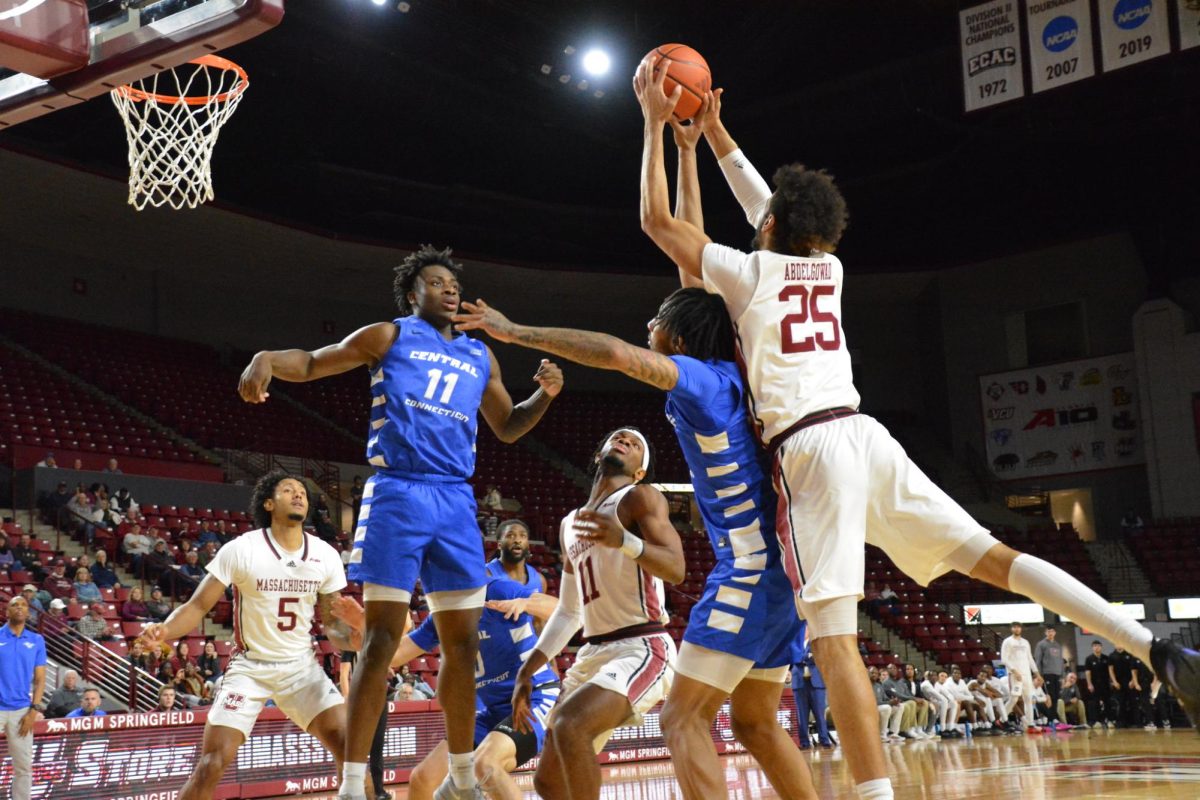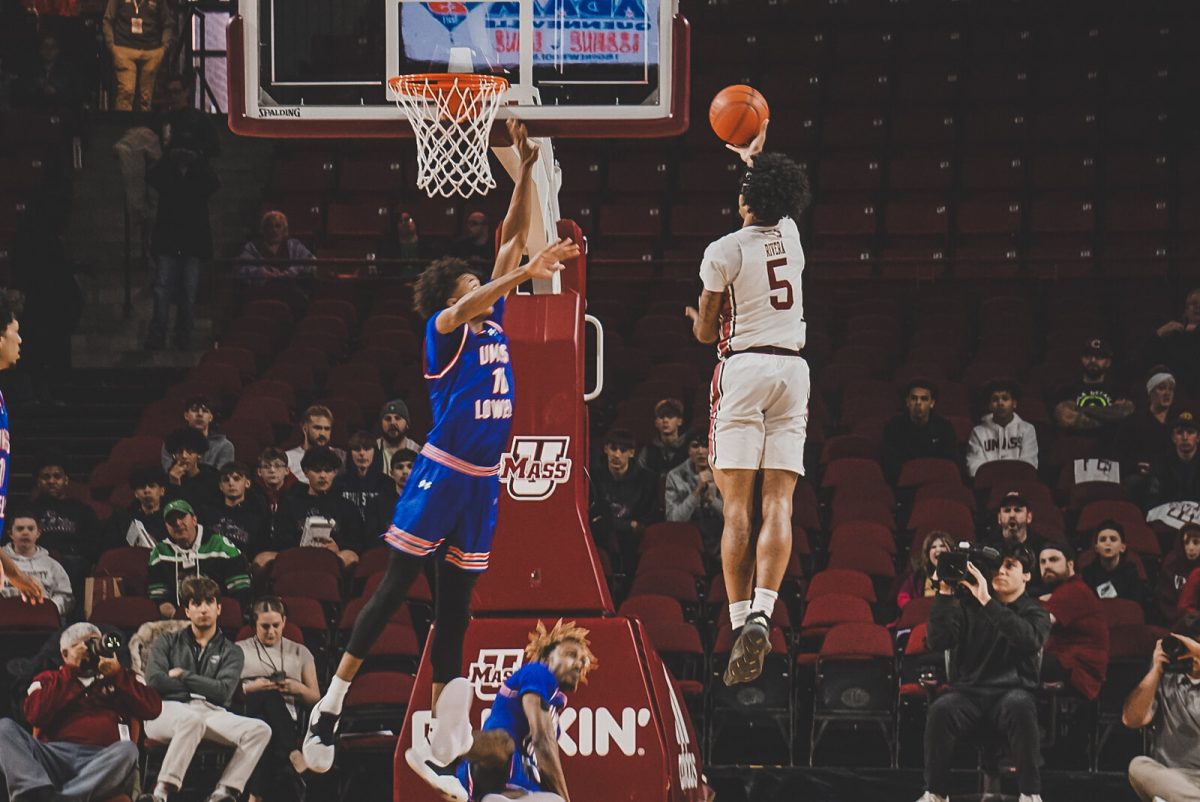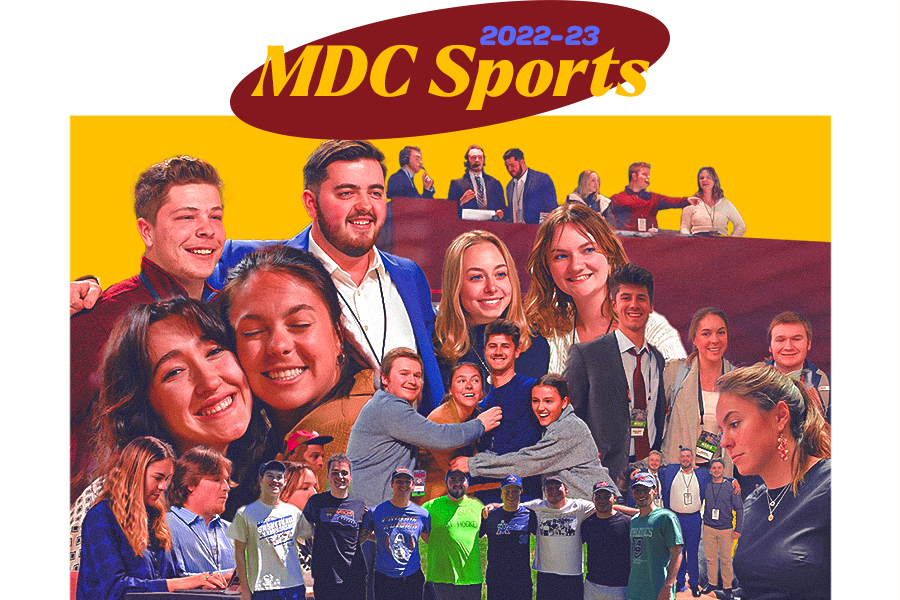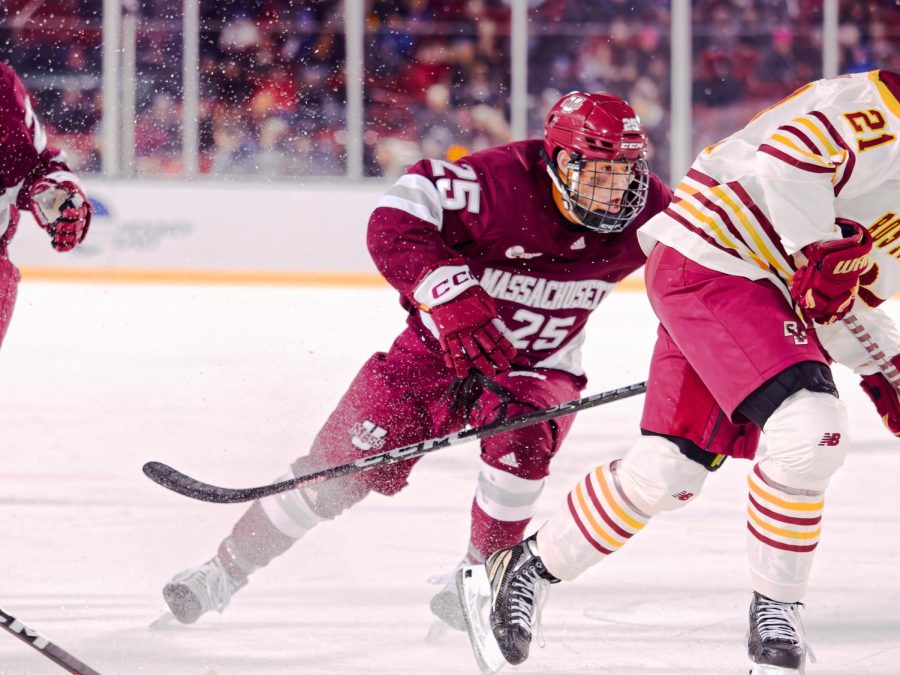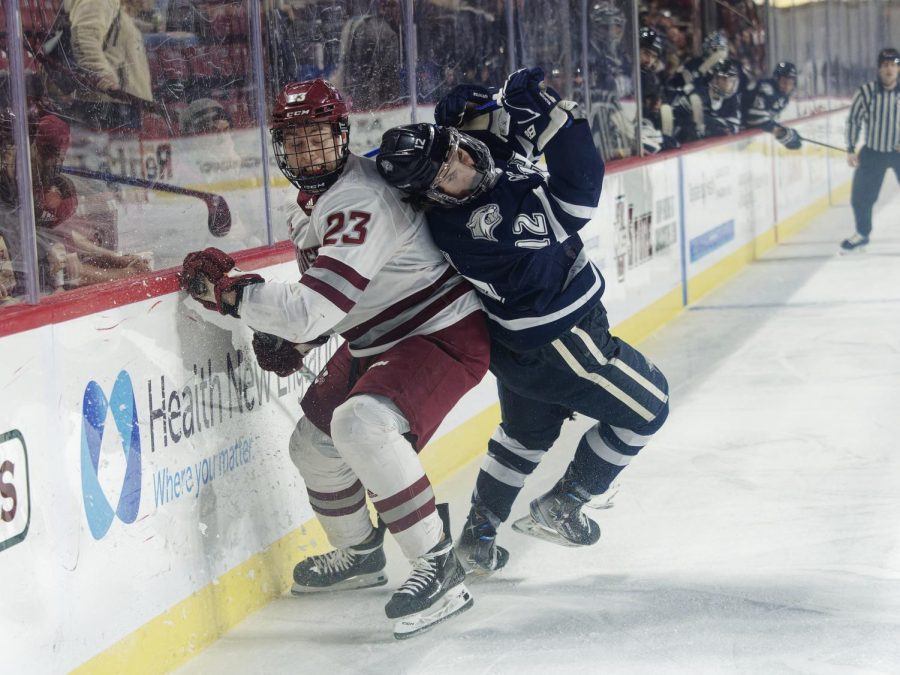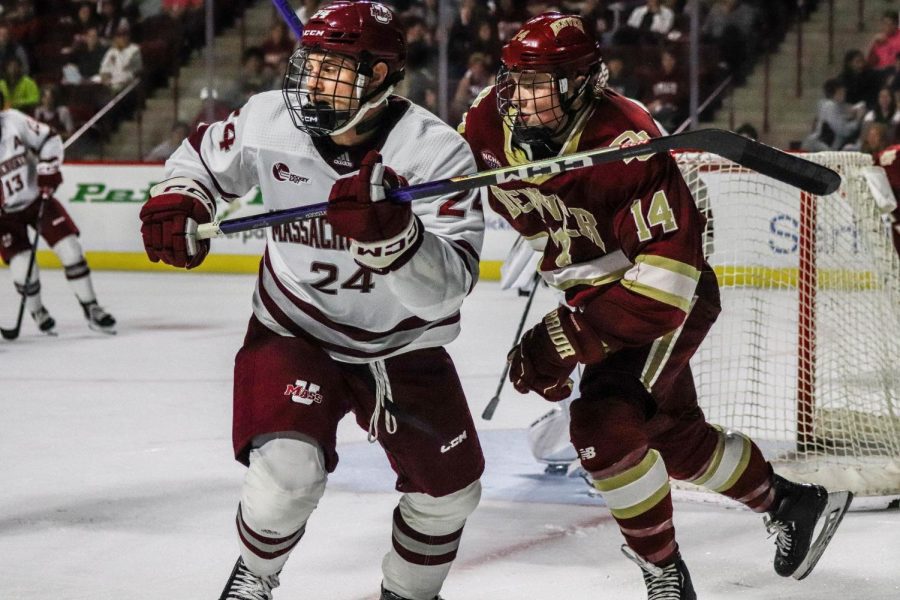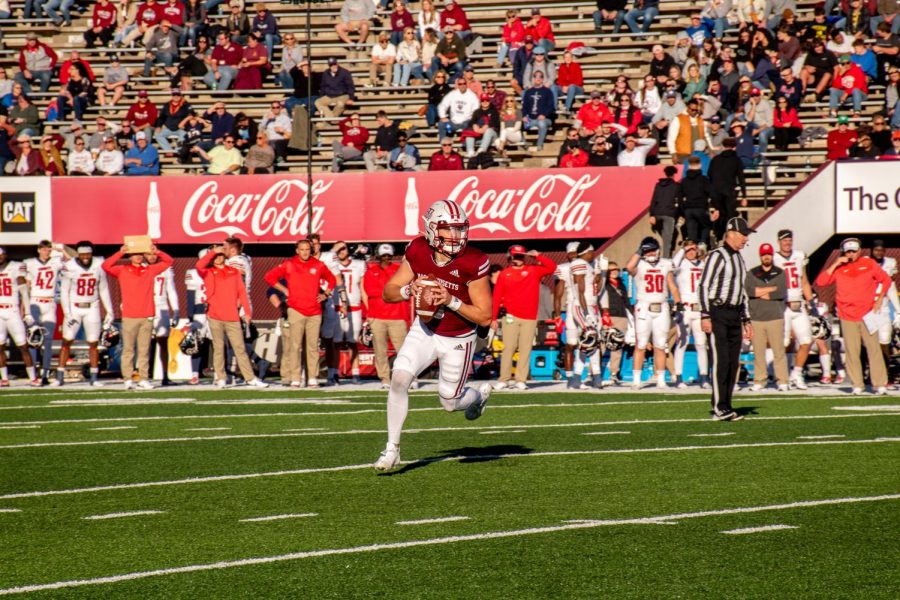If you’ve been to a Massachusetts men’s basketball game this season, you’ve probably noticed that the Mullins Center is a little more empty than usual.
Although based on the empty seats I’ve seen at most games, you probably don’t know what I’m talking about. Last month, The Springfield Republican reported that hockey outdrew basketball at home games for the first time since the 2003-04 season.
At the time the article was printed, Feb. 14, The Republican reported hockey averaged 5,407 fans per home game, while basketball, which is usually the biggest sport at UMass, drew 3,322 fans. There are a variety of reasons for this year’s disparity – controlled under the marketing department and coach Derek Kellogg, while others are just bad luck.
The first few games of the season are a good place to start. Hockey started the season by beating then-No. 2 Boston University on Friday, Oct. 16.
The basketball team nearly lost to Dowling, a Division II school, during the Minutemen’s exhibition game, and then lost to Cornell in the home opener. The problem with playing the Big Red is that they’re one of the 30 or 40 best teams in the country, but has no appeal because it’s an Ivy League team.
It also didn’t help that the game was on a Wednesday.
The Minutemen killed their next opponent, Arkansas-Fort Smith on a Saturday night, but that’s not exactly going to make anyone living in Puffton want to go hop on a bus to watch the team.
At the end of the year, the basketball team will have played three Saturday night games and a Friday night game that was right before finals week. The hockey team’s first game on a day other than Friday or Saturday was Sunday, Jan. 24 against Vermont, but it was ranked 17th in the nation at that time.
Kellogg doesn’t have the fortune of playing in a big conference such as the Hockey East. Sure, the Atlantic 10 has been exciting to watch with Xavier, Temple and Richmond as the top three teams, but they aren’t nearly as big of a deal as Syracuse or West Virginia in the Big East.
The luck of the A-10’s scheduling allowed the Minutemen to play the Musketeers and Charlotte, which drew the biggest crowd all season, but Kellogg needs to focus more on getting a sold out crowd to Amherst before worrying about the rest of the state.
UMass played Memphis at the TD Garden in Boston before front of a crowd of over 8,000 people on ESPN2. That game was the biggest marketing success of the team this season. But even a win against the Tigers did little to propel attendance in Amherst.
If the basketball team hopes to raise its numbers for next year, it needs to put more of its games on Saturday nights. Winning more games would also help, but the marketing department can’t do anything about what happens on the court, and the team is going to be in rebuilding mode for another year or two anyway.
However, playing an opponent most students recognize would be a huge step in the right direction.
Duke doesn’t have to be on the schedule, but teams like Texas Tech, Notre Dame and Indiana would bring students to the Mullins Center because of their names, but these teams are not good enough to slaughter the Minutemen.
Fresno State is a great example of a team that manages to put fans in the seats despite having a losing team. The Bulldogs (13-21, 3-13 Western Athletic Conference) finished dead last in a mid-major conference during the 2008-09 season.
However, their average home attendance was 8,969 people. Granted, their stadium is twice the size of the Mullins Center, but Kellogg would be thrilled if his team could pull in an average of just 5,000.
One of the ways Fresno State brought people to the stadium was by bringing Big West powerhouse Pacific, Oregon State from the Pacific 10 and UNLV, who is a pretty popular team on the West Coast. The timing wasn’t ideal, but the Bulldogs filled 50 to 60 percent of the stadium almost every game.
UMass can do the same by giving a call to Rutgers or Providence instead of Quinnipiac.
Adam Miller is a Collegian columnist. He can be reached at [email protected].





